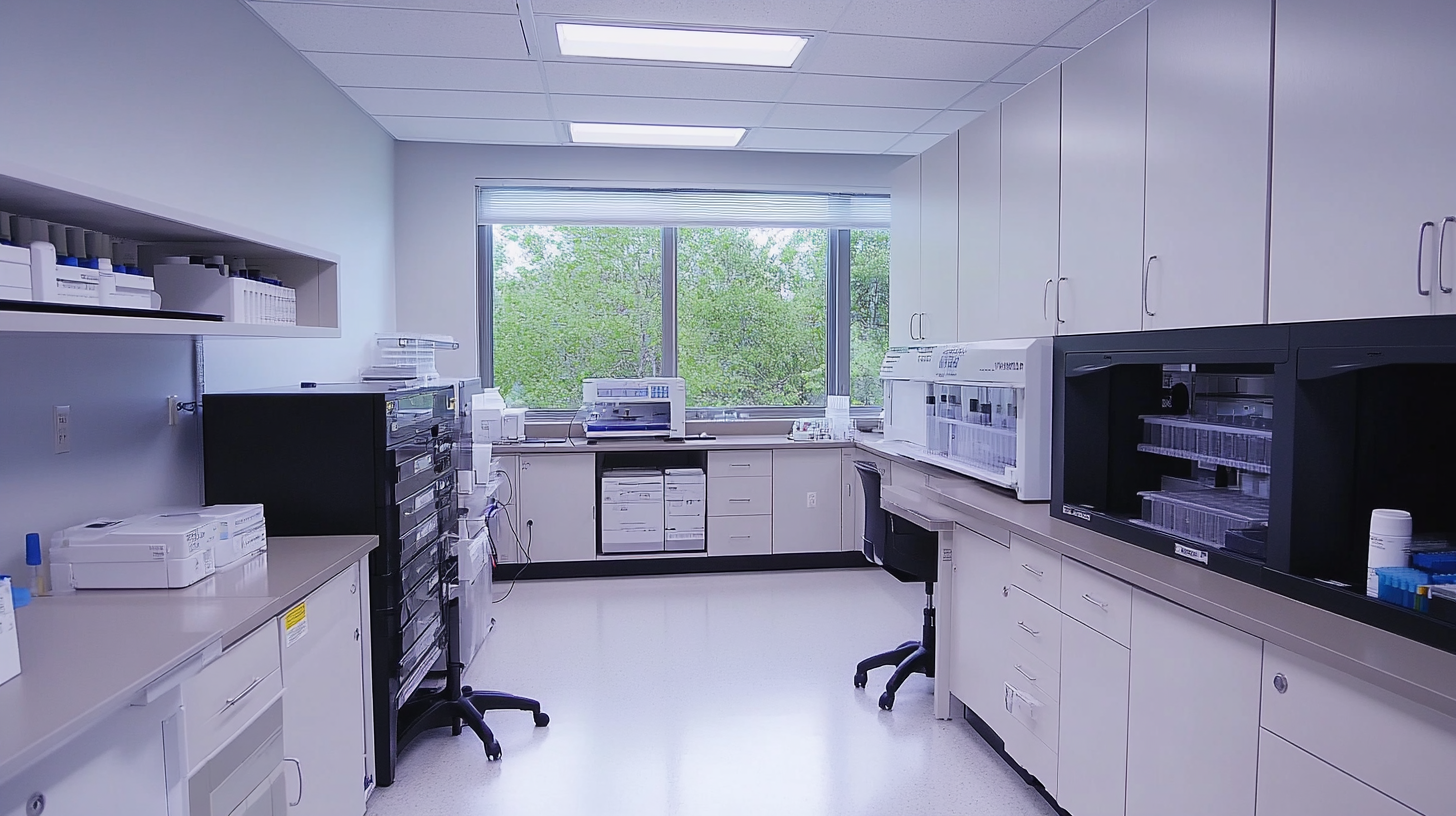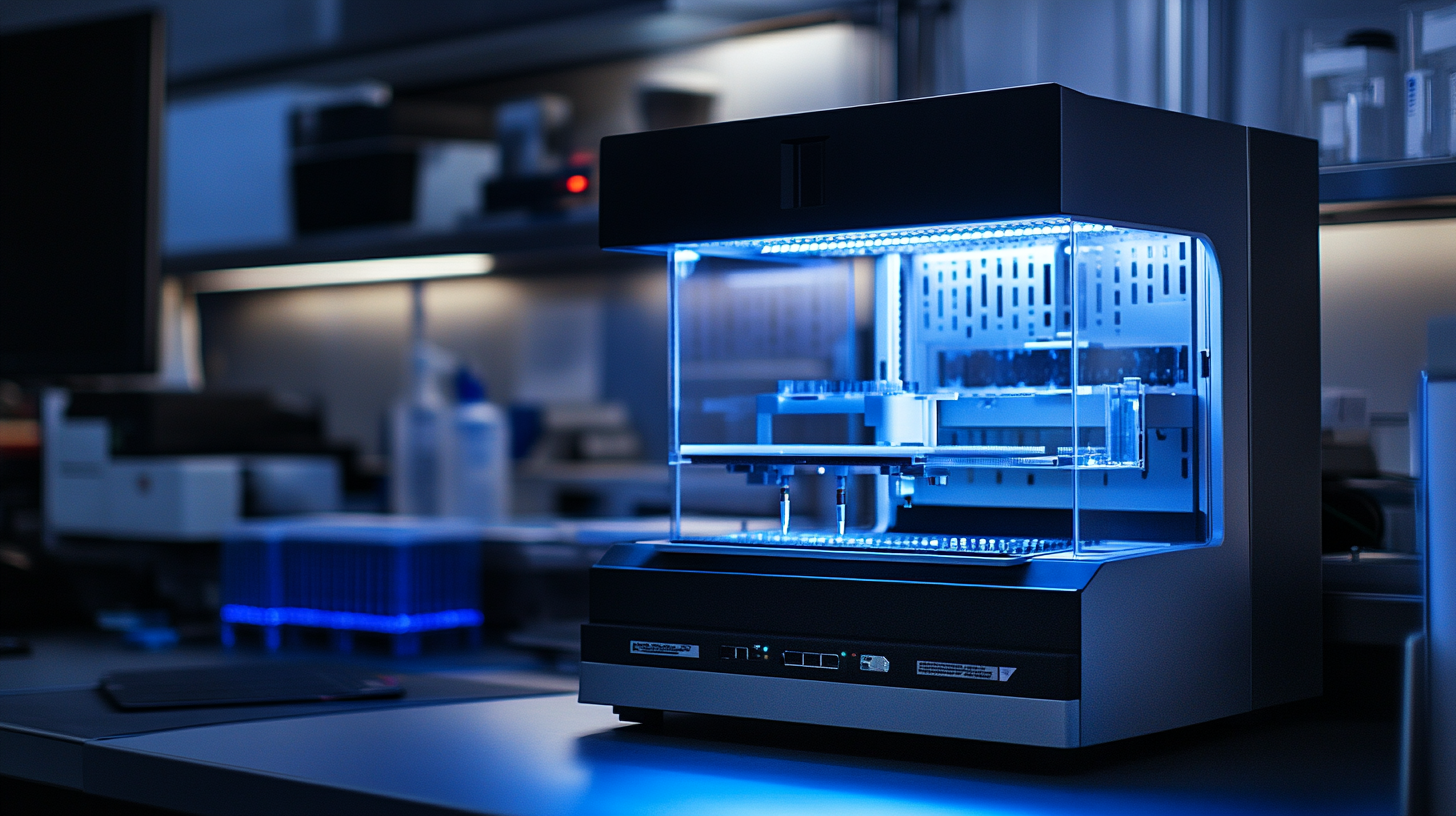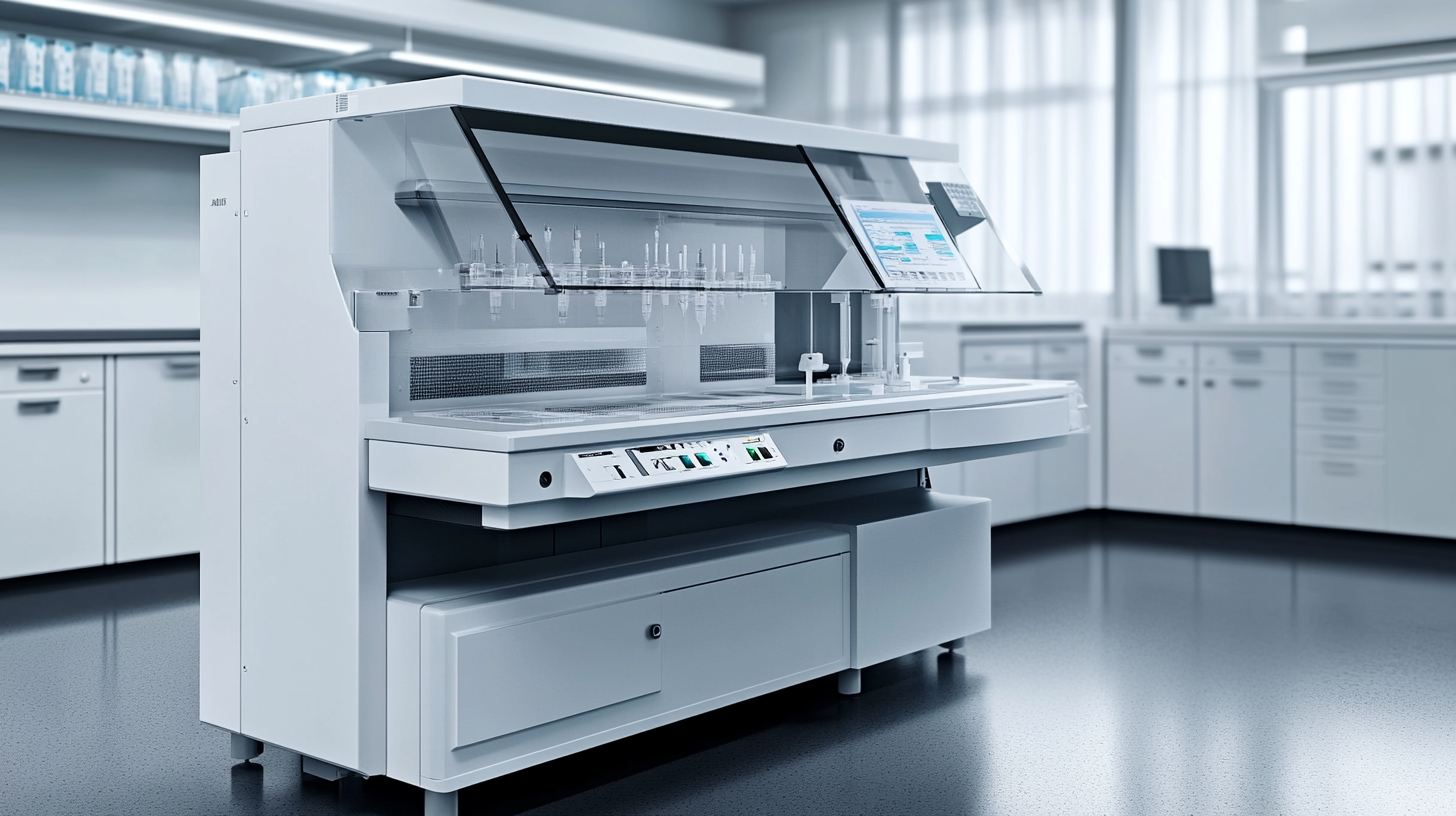

Maximizing Laboratory Efficiency with Cutting Edge Lab Instruments for Enhanced Research Productivity
In today's rapidly evolving scientific landscape, the role of state-of-the-art lab instruments in enhancing research productivity cannot be overstated. According to a recent report by the National Institute of Standards and Technology, laboratories that implement advanced technologies can increase their efficiency by up to 30%, enabling researchers to focus on innovative problem-solving rather than time-consuming manual processes. Moreover, the Global Laboratory Equipment Market is projected to reach $60 billion by 2026, reflecting a growing investment in precision and automation within scientific research. As laboratories strive to maximize their output, the integration of cutting-edge lab instruments becomes essential not only for optimizing workflows but also for improving accuracy and reliability in experimental results. This blog explores how the latest advancements in lab instruments can transform laboratory operations, ultimately fostering a new era of research excellence and productivity.

The Importance of Modern Lab Instruments in Streamlining Workflows
In the realm of modern laboratory work, the integration of advanced lab instruments is pivotal for improving research productivity and streamlining workflows. As per industry reports, the global laboratory automation market is projected to grow at a compound annual growth rate (CAGR) of 6.3% from 2023 to 2033. This growth underscores the necessity for laboratories to adopt cutting-edge technologies that not only enhance operational efficiency but also reduce the likelihood of errors during experimental processes.
Keeping in mind the importance of safety in experimental environments, recent training initiatives within academic institutions focus on safety awareness and operational best practices for lab equipment. By cultivating a culture of safety through rigorous training, researchers are better equipped to identify potential hazards, which is essential for maintaining a productive and secure working atmosphere. As laboratories increasingly embrace automation and modern instruments, they can expect not only to streamline their workflows but also to foster a safer and more efficient research environment, ultimately leading to substantial advancements in scientific inquiry.

Innovative Technologies Driving Research Productivity in Laboratories
In today’s fast-paced research environment, staying ahead means integrating innovative technologies that significantly boost laboratory efficiency. Cutting-edge lab instruments not only streamline workflows but also provide enhanced accuracy and reliability. From automated pipetting systems to advanced data analysis software, these instruments are designed to help researchers focus more on their scientific inquiries rather than mundane tasks.
**Tip:** Invest in automation tools. Simple automation devices can handle repetitive tasks with precision, allowing researchers to dedicate their time to more critical aspects of their projects. By reducing human error and increasing throughput, labs can improve overall productivity.
Additionally, embracing digital solutions such as cloud-based data management systems can revolutionize the way laboratories operate. These platforms facilitate real-time data sharing and collaborative research, making it easier for teams to access information and draw insights quickly.
**Tip:** Utilize collaborative tools. Implementing digital collaboration software in your lab can break down silos, enabling seamless communication among team members. This leads to faster decision-making and a more integrated research process.

Selecting the Right Lab Instruments for Optimal Efficiency
When it comes to maximizing laboratory efficiency, selecting the right instruments is crucial for optimal productivity. Advanced lab instruments not only streamline workflows but also enhance the accuracy and reliability of research outcomes. For instance, consider the integration of automated pipetting systems and precision balances. These cutting-edge devices minimize human error and free up valuable time for researchers, allowing them to focus on data analysis and experimentation instead of repetitive tasks.
In addition to automation, the importance of versatility in laboratory tools cannot be overstated. Instruments that offer multiple functionalities can reduce the need for numerous devices, ultimately saving both space and budget. For example, multifunctional spectrophotometers that can carry out various types of analyses can be game-changers in research productivity. The right combination of technology and functionality empowers laboratories to achieve their goals efficiently, fostering an environment of innovation and collaboration.
Maximizing Laboratory Efficiency with Cutting Edge Lab Instruments for Enhanced Research Productivity
| Instrument Name | Function | Benefits | Recommended Use Case |
|---|---|---|---|
| High-Throughput Mass Spectrometer | Analyzing compounds in complex mixtures | Increased analytical speed and sensitivity | Drug discovery and environmental analysis |
| Automated Liquid Handler | Precision liquid dispensing | Reduces human error and increases throughput | Molecular biology and high-throughput screening |
| Real-Time PCR System | Quantitative DNA/RNA amplification | Fast results and high specificity | Genetic research and diagnostics |
| Microscopy Imaging System | High-resolution microscopic imaging | Detailed visualization of samples | Cell biology and material science |
| Data Analysis Software | Statistical and graphical analysis of data | Streamlines data interpretation | Research evaluation and reporting |
Integrating Automation and Smart Solutions for Enhanced Lab Performance
In today's rapidly evolving research landscape, integrating automation and smart solutions into laboratory settings is paramount for enhancing overall performance. As more laboratories adopt advanced technologies, research productivity will undoubtedly see significant improvements. Automation in life sciences, for instance, minimizes the manual handling of instruments and reagents, allowing researchers to focus on data analysis and interpretation, thus streamlining workflows.
**Tip: Consider implementing laboratory information management systems (LIMS) to automate data collection and management. This not only saves time but also reduces the risk of human error.**
Furthermore, the growing trend of utilizing AI technologies, akin to transformations seen in manufacturing, is making its way into labs. By applying machine learning algorithms, researchers can analyze vast datasets more efficiently, identify patterns, and make informed decisions faster than ever before. This shift towards smarter solutions is crucial for maintaining a competitive edge in research.
**Tip: Explore the incorporation of AI-driven tools that assist in predictive analytics, enabling proactive adjustments to experimental designs.** Integrating such technologies paves the way for more innovative discoveries and substantial advancements in various scientific fields.
Maximizing Laboratory Efficiency with Cutting Edge Lab Instruments
This bar chart illustrates the impact of utilizing automation and smart solutions in enhancing laboratory performance. The data represents the productivity levels observed in laboratories before and after integrating these advanced instruments.
Case Studies: Success Stories in Maximizing Lab Efficiency with Advanced Tools
In recent years, laboratories have significantly enhanced their research productivity by adopting advanced instruments. Case studies highlight remarkable improvements across various fields; for instance, a report by the American Association for Clinical Chemistry noted that labs integrating automated liquid handling systems observed a 40% reduction in experiment turnaround time. These advanced tools not only speed up processes but also ensure higher accuracy, crucial for generating reliable results.
One successful example comes from a biomedical research lab that implemented high-throughput screening technologies. As a result, they reported an increase of over 50% in the number of compounds tested weekly, allowing them to accelerate drug discovery efforts. Such efficiency gains reflect a broader trend: labs that invest in state-of-the-art instrumentation can better meet the demands of modern scientific inquiries.
**Tip:** To further maximize efficiency, consider regular training sessions for lab personnel on new technologies. Keeping the team up to date will foster a culture of innovation and adaptability.
Another strategy involves integrating data analysis software that can process results in real time. This not only minimizes data management burdens but also facilitates quicker decision-making, allowing researchers to pivot their strategies based on immediate feedback. With the right tools and practices, laboratories can truly transform their operational capabilities.





